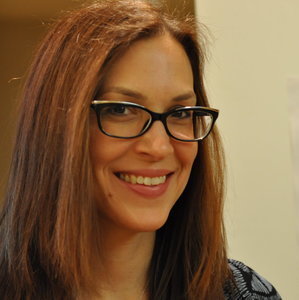Those who suffer from endometriosis are well aware of the personal burden and cost of this terrible disease. The cost to society, both in direct healthcare costs as well as the cost of loss productivity of those who suffer from the disease, is less well known. A recently published study addresses this cost, and the results highlight a discouraging disparity in the cost of the disease versus the investment in understanding and curing it.
The economic cost of endometriosis is staggering. The World Endometriosis Research Foundation (WERF) has conducted and published a prospective study of the direct and indirect costs associated with endometriosis in women over 10 different countries. Direct costs were mostly health care costs, and indirect costs were costs associated with loss of productivity. This study found that the average cost per year, per woman, was 11,497 USD. In the U.S., using the incidence of endometriosis of 10 percent of reproductive age women, this amounts to 85 billion dollars per year. Of this amount, approximately two-thirds is associated with lost productivity, and one-third is due to direct health care costs. The economic burden of the direct health care costs from endometriosis were similar to other chronic diseases such as diabetes, Crohn’s disease, and rheumatoid arthritis.
This study also showed that the health-related quality of life in women with endometriosis was decreased. Severe and chronic pain was the most pronounced complaint, and endometriosis had a profound impact across all areas of life—education, work, and social well-being. A separate study by WERF showed that the average loss of productivity due to endometriosis was 11 hours per person, per week. Mental well-being is also seriously impacted. One study has found that 87 percent of endometriosis patients have depressive symptoms (severe in 33 percent), and 88 percent have anxiety.
Dr. Stephen Kennedy, a Professor of Reproductive Medicine, and a founding board member of the WERF, summed up the impact of endometriosis with this statement:
“Endometriosis affects women during the prime years of their lives, a time when they should be finishing an education, starting and maintaining a career, building relationships and perhaps have a family. For these women to have their productivity affected, their quality of life compromised and their chances for starting a family reduced, is something society can no longer afford to ignore. It is time we see serious investment in preventing this debilitating condition in the next generation of women.”
However, society is ignoring it. On every front that we could be making progress against the ravages of this disease, we have made little progress over the last 50 years. We have not improved the length of time it takes to diagnose endometriosis—the average diagnostic delay remains an unacceptable seven to nine years. We have not made significant improvements in being able to diagnose endometriosis non-invasively either by improving imaging techniques, or by developing a non-invasive diagnostic test, such as a blood test. At a time when the molecular diagnostics industry has seen a huge explosion in techniques that could be applied to creating a diagnostic test for endometriosis, we still have no molecular diagnostic test, nor is there one on the horizon.
We have not made much improvement in providing endometriosis patients with effective treatments either. Many physicians are poorly educated about endometriosis and still rely on treatments that are based on outdated ideas about how endometriosis develops, and therefore are not effective, such as Lupron or the birth control pill. And most physicians who offer surgery as a treatment perform cautery or ablation, a method of surgery that is known to give temporary relief at best, or create additional complications without adequately treating the disease, at worst.
Excision surgery is recognized to treat endometriosis lesions more effectively than cautery or ablation surgery, and yet fewer than 100 surgeons in the U.S. are practicing expert excision surgery, a number far to small to serve the over 7.5 million women estimated to have endometriosis in the U.S. Endometriosis patients recognize that integrative treatment plans that often include surgery, sometimes medication, and additional approaches such as physical therapy, nutrition, and stress reduction, provide the best relief from endometriosis symptoms and symptoms from other associated diseases and comorbidities. And yet most doctors treating endometriosis patients do not use an integrative approach.
This lack of effective treatment has been highlighted in two recent studies by the WERF. In the study looking at the costs associated with endometriosis, higher costs were associated with increasing severity of disease, increased pain, infertility, and most surprisingly, the number of years since diagnosis. This suggests that even once diagnosed, lack of effective treatment is causing the costs, both in health care costs and loss of productivity, to increase, the longer a person has the disease. In addition, the WERF studies have shown that even after treatment for endometriosis at a tertiary care center (health care from specialists at a large hospital), 60 percent of women continued to have chronic pain.
Despite these major shortcomings in diagnosis and treatment, and the high burden of endometriosis both economically to society, and on a personal level, to those who suffer with it, there is very little research being undertaken on endometriosis. At clinicaltrials.gov, where all clinical trials must be registered, there are 11922 clinical trials registered for diabetes, 1894 for rheumatoid arthritis, and 798 for Crohn’s disease, three diseases that have similar direct health care costs to endometriosis. However, for endometriosis, there are only 206 clinical trials registered. Basic research is obviously lacking as well, given that the mechanisms underlying the development of endometriosis are very poorly understood.
And in terms of the major shortfall in the number of specialists who can provide excision surgery and integrative care, this is not likely to be rectified soon either. There is little incentive for new physicians to train in this area, because reimbursement from insurance companies is not adequate for the complex surgeries and overall care that endometriosis patients need. In countries with state-run health care, the situation with reimbursement and access to specialists is is even worse.
Why isn’t endometriosis a priority for anybody except those who suffer from it? How many more billions of dollars are we going to waste because women suffering with endometriosis are hampered from leading productive lives, before we start investing money where it can make a difference—in improving diagnosis and patient care for endometriosis?











This is spot on. I have lived with severe endo for nearly 20 years. I have had two major surgeries. Including a total hysterectomy and a colon resection. I have been battling depression and anxiety which is of course tied to hormone imbalance. My energy and productivity have plummeted in the last 5 years as the disease got worse. The surgeries have had severe side affects on hormones and my whole endocrine system. I am only 34 but have menopausal symptoms and I feel more like age 64.